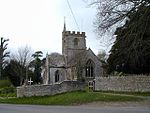Charlton Mackrell railway station
Disused railway stations in SomersetFormer Great Western Railway stationsPages with no open date in Infobox stationRailway stations in Great Britain closed in 1962Railway stations in Great Britain opened in 1905 ... and 3 more
Somerset building and structure stubsSouth West England railway station stubsUse British English from May 2017

Charlton Mackrell railway station was a minor railway station serving the village of Charlton Mackrell in Somerset, England, from 1905 until 1962.
Excerpt from the Wikipedia article Charlton Mackrell railway station (License: CC BY-SA 3.0, Authors, Images).Charlton Mackrell railway station
Mill Lane,
Geographical coordinates (GPS) Address Nearby Places Show on map
Geographical coordinates (GPS)
| Latitude | Longitude |
|---|---|
| N 51.0557 ° | E -2.6734 ° |
Address
Mill Lane
Mill Lane
TA11 7BN , Charlton Mackrell
England, United Kingdom
Open on Google Maps







